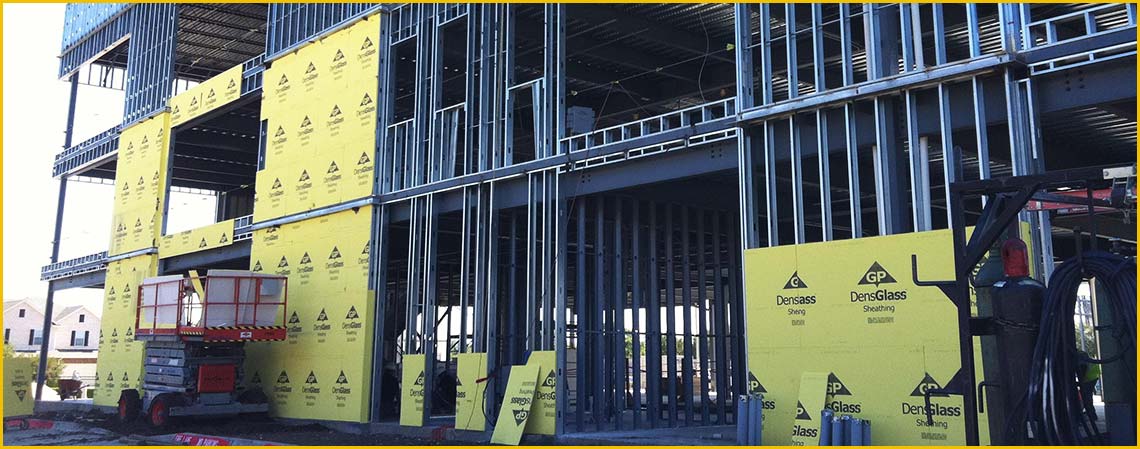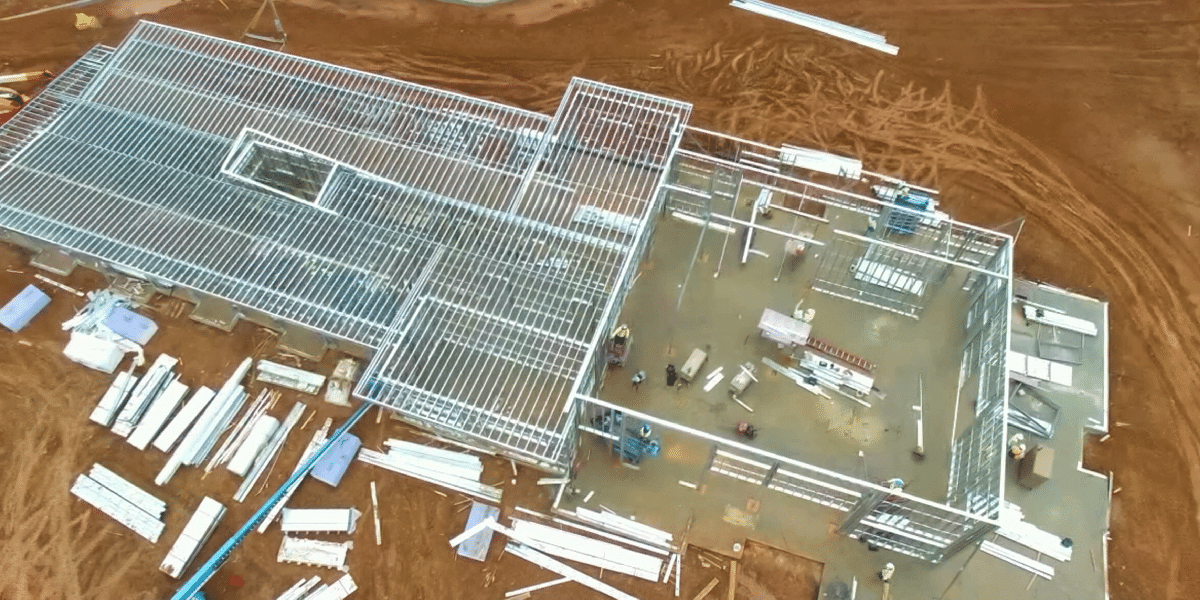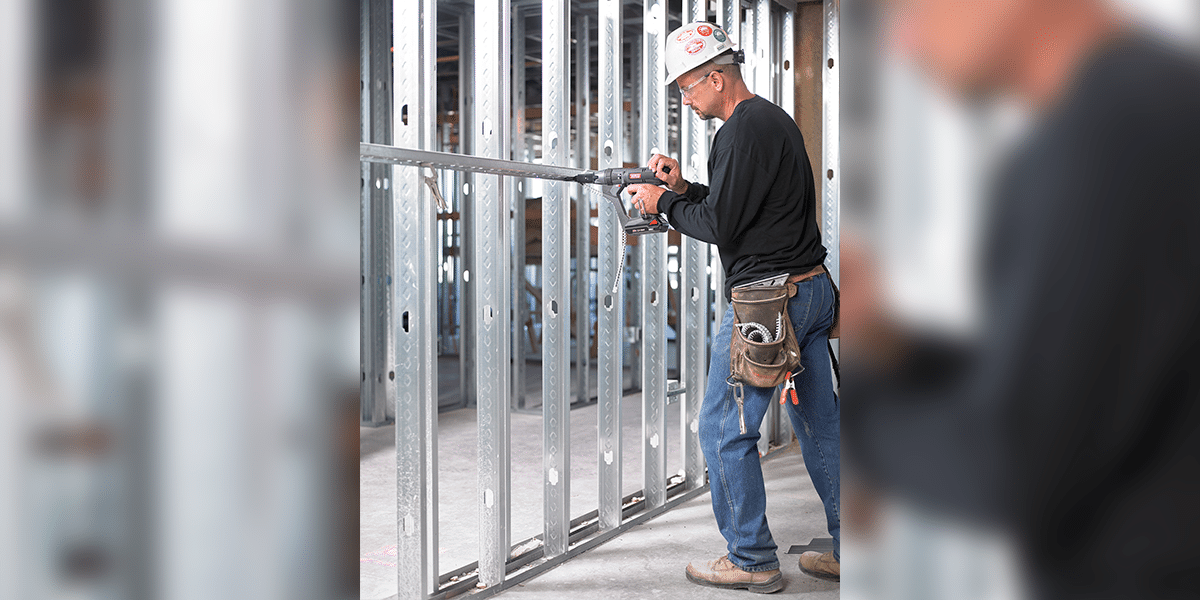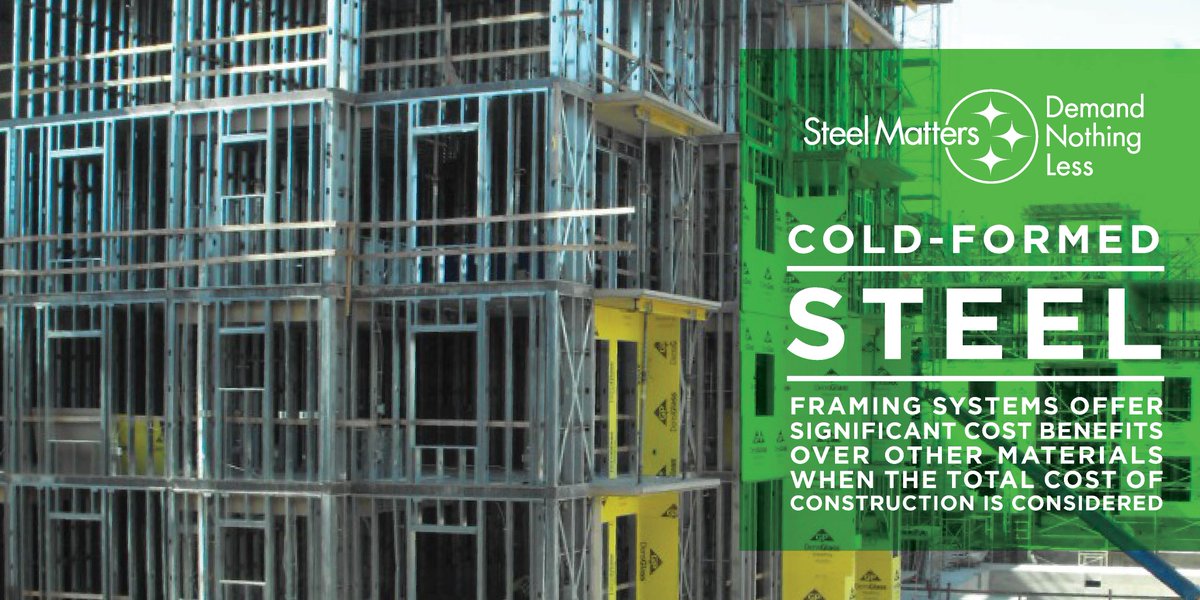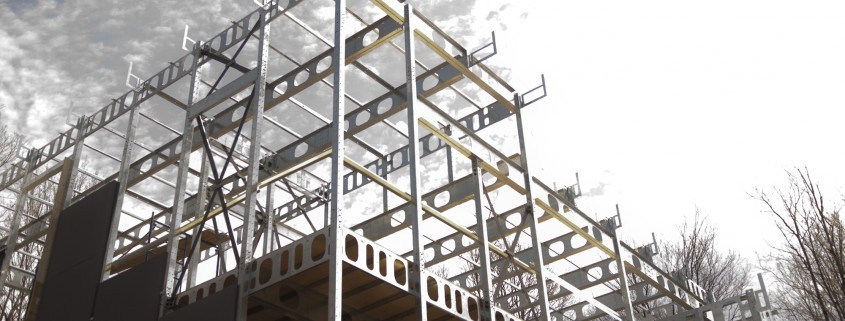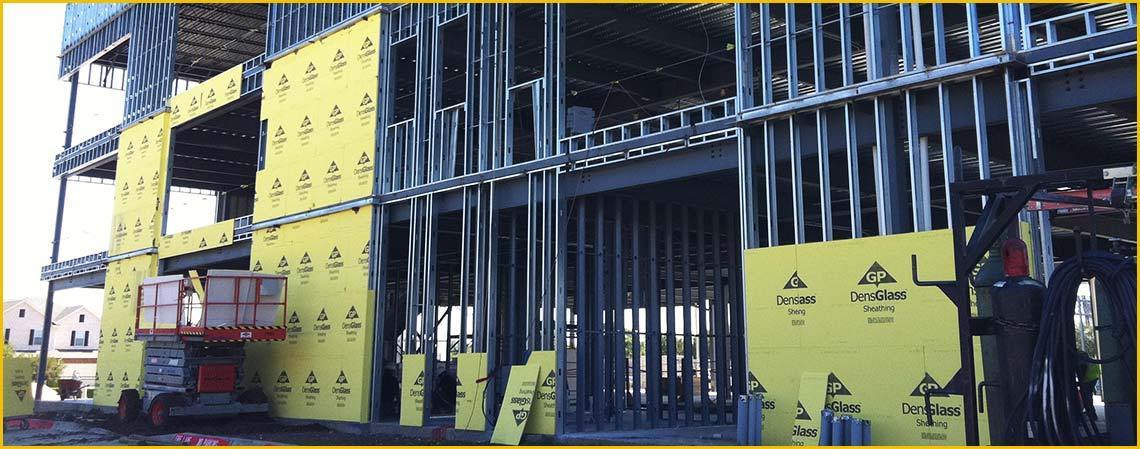Framing, in construction, is the fitting together of pieces to give a structure support and shape. Framing materials are usually wood, engineered wood, or structural steel. The alternative to framed construction is generally called mass wall construction which is made from horizontal layers of stacked materials such as log building, masonry, rammed earth, adobe, etc.
Building framing is divided into two broad categories, heavy-frame construction (heavy framing) if the vertical supports are few and heavy such as in timber framing, pole building framing, or steel framing or many and smaller called light-frame construction (light framing) including balloon, platform and light-steel framing.
Light-frame construction using standardized dimensional lumber has become the dominant construction method in North America and Australia because of its economy. Use of minimal structural material allows builders to enclose a large area with minimal cost, while achieving a wide variety of architectural styles.
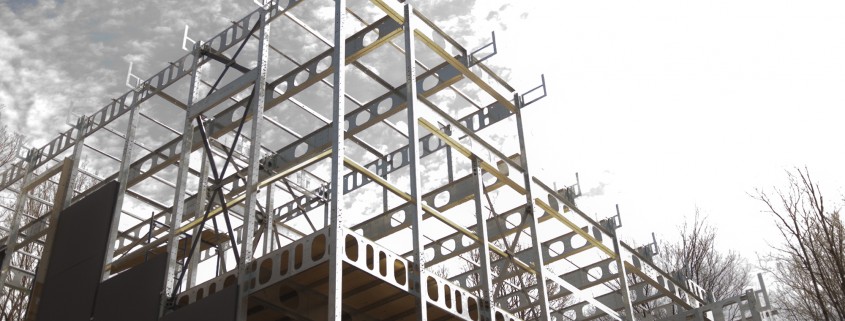
Great for strength
Modern light-frame structures usually gain strength from rigid panels (plywood and other plywood-like composites such as oriented strand board (OSB) used to form all or part of wall sections) but until recently carpenters employed various forms of diagonal bracing to stabilize walls. Diagonal bracing remains a vital interior part of many roof systems, and in-wall wind braces are required by building codes in many municipalities or by individual state laws in the United States. Special framed shear walls are becoming more common to help buildings meet the requirements of earthquake engineering and wind engineering.
